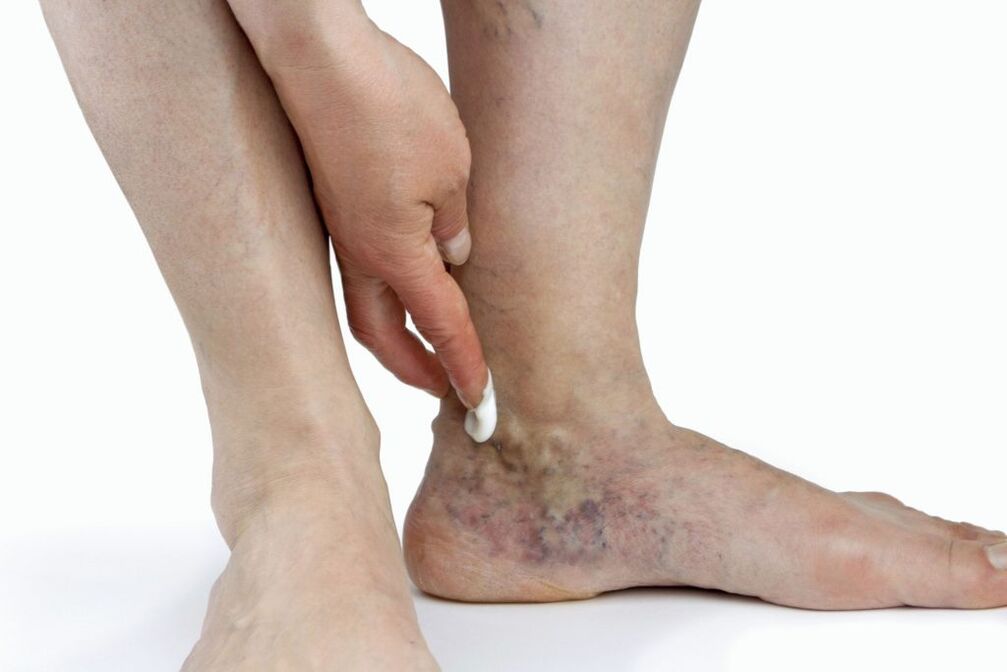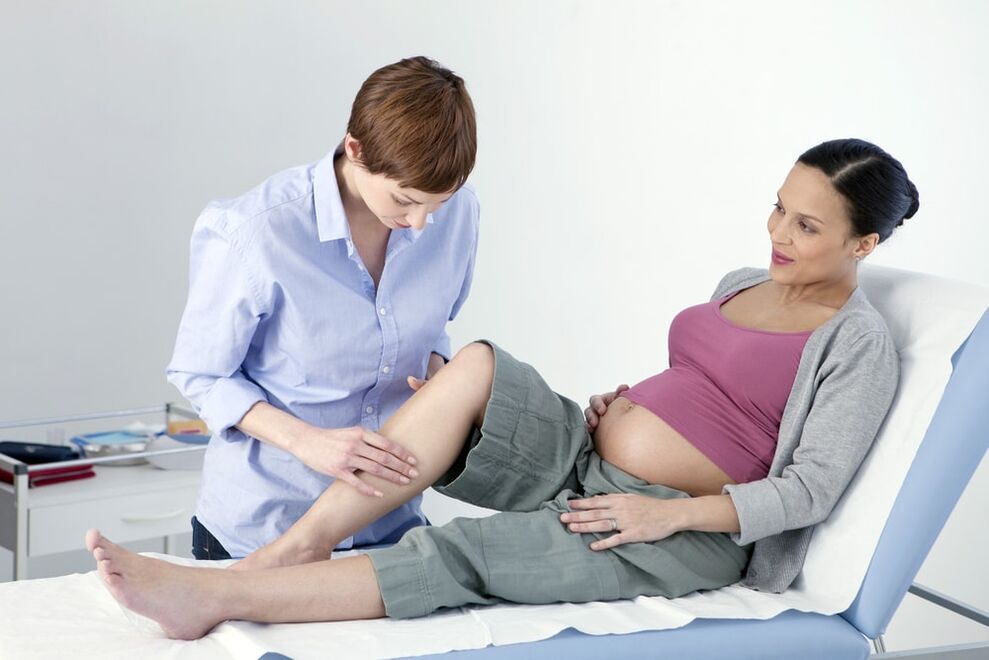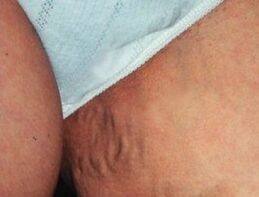
A less aesthetic disease is varicose veins, which are manifested in the expansion of superficial venous vessels, the network of which is visible through the skin.With this disease, blood circulation through these vessels is disrupted, which can lead to insufficient oxygen supply and removal of carbon dioxide.The symptoms are pronounced, so it is necessary to treat them at the right time.It is better to avoid this disease entirely through prevention.Often, treatment for varicose veins involves surgery.
Why do varicose veins appear?There are reasons that are often found in the lives of many people:
- Metabolic disorder.
- Professions where a person is constantly in a standing position (salesmen, waiters, etc.).
- Bad habits (smoking and alcohol) that negatively affect the condition of blood vessels.
- Endocrine diseases.
- Abuse of red pepper in food.
Reasons for the development of varicose veins
Doctors are less and less inclined to believe that varicose veins are an inherited disease.This is not always the case.Scientists note more other factors that often provoke the disease: lifestyle, hormonal levels and nutrition.
Impaired metabolism is one of the causes of varicose veins.It leads to obesity, which is the result of an inactive lifestyle and poor diet, which are very common today.People are consuming more and more highly processed foods, abandoning plant foods.
Also, occupations that force a person to stand for a long time, or sit for a long time, or carry heavy loads or make sudden movements, stress the veins a lot.All this leads to the development of varicose veins over time.
- Long flights or transfers affect the condition of the veins, which is often observed in the male half.
- Women often suffer from varicose veins in the inguinal veins due to wearing tight underwear.They also suffer from varicose veins of the lower extremities if they often walk a lot in high heels or uncomfortable soles.
Pregnancy also becomes a factor in the development of varicose veins, especially if there is a history of rheumatoid arthritis or osteoporosis.
Other causes of varicose veins are:
- Deep vein thrombosis.
- Adenoma of the prostate.
- Cough.
- Persistent constipation.
- Surgery using anesthesia.
How to recognize varicose veins?
The first sign of varicose veins is the appearance of a blue venous pattern (net) on the surface of the skin.It usually appears on the thigh, in places where cellulite is located - impaired fat metabolism, which puts pressure on the veins.
The second sign of varicose veins is swelling of the soft tissues of the legs.When diagnosing the disease, it is differentiated from urolithiasis of the kidneys and failure of the cardiovascular system.
The more varicose veins develop, the stronger the pain in the calf muscles becomes.The pain is nagging or acute, usually intensifies during lunch after being subjected to a certain load during the day.
A person complains about:
- Importance on foot.
- Trophic changes in the leg area.
- Night cramps.
After external examination, a network or stars are visible, especially if the person is standing.If the patient takes a lying position, then the external manifestations of varicose veins can become invisible.The swelling usually goes away after a night's rest.
Stages of varicose veins
Varicose veins are progressive and go through the following stages:
- The first is the swelling of the veins, the heterogeneity of the structure, the hardening of the veins, the formation of nodes and thrombophlebitis.
- The second is fatigue, nervousness, tiredness, heaviness in the legs.Deterioration of health, insomnia and memory loss.Complaints of night cramps appear.For a long time, the skin cannot return to its previous shape after removing the outer clothing due to swelling.
- The third is the trophic changes in the lower leg.The skin becomes brown, dry, cracked, lifeless.Development of dermatitis with characteristic redness and itching.The swelling can now be located in any part of the leg.The feeling of heaviness is reminiscent of muscle swelling.Any stress leads to rapid fatigue, which provokes depression, insomnia and weakness.
- The fourth is the stage of developing complications in the form of inflammation of the vein walls, bleeding or the appearance of trophic ulcers.

Varicose veins during pregnancy
If a woman has a tendency to develop varicose veins or the first signs have already appeared before pregnancy, then during pregnancy this disease will appear in full force.Typically, 35% of women experience varicose veins during their first pregnancy, 50% during their second pregnancy, and 75% during their third pregnancy.
Varicose veins are explained by the fact that blood enters the lower extremities, but its exit becomes difficult.This leads to blood stagnation, causing the veins to dilate and become visible.If a woman is not treated, there may be a risk of a blood clot breaking, which will lead to the death of the mother and the baby.
Other causes of varicose veins during pregnancy are:
- Hormonal changes.
- The expansion of the uterus and its pressure on the vessels.
- Increased amount of blood.
- Individual characteristics.
Pathology can also appear in the area of the anus or external labia.
Varicose veins of the pelvis
Varicose veins can develop not only in the legs, but also in the pelvic area.Often this disease develops in women.It is diagnosed using a three-dimensional ultrasound, where you can see the dilated veins of the small pelvis, as well as inflammatory processes in the uterus, ovaries and bladder.
but also in the pelvic area.Often this disease develops in women.It is diagnosed using a three-dimensional ultrasound, where you can see the dilated veins of the small pelvis, as well as inflammatory processes in the uterus, ovaries and bladder.
Symptoms for pelvic varicose veins are similar to those of leg varicose veins.Heaviness and pain are felt in the lower part of the abdomen.The cause is often pregnancy, pathologies in the pelvis, difficult childbirth.Other factors are:
- Constantly holding a child in your arms.
- Sedentary lifestyle.
- Taking oral contraceptives.
- Congenital underdevelopment of the venous wall.
How are varicose veins treated?
Conservative treatment is permissible only if there are contraindications for surgery or in the initial stage of varicose veins, when pathological changes have not yet occurred.Here are used:
- Bandaging.
- Compression stockings.
- Constant change of attitude.
- Raise your legs so they rest.
- Avoiding poorly ventilated areas with high temperatures.
- Eliminating large amounts of fluid and salt from the diet.
- Taking diuretics.
- Venoprotectors.
- Non-steroidal anti-inflammatory drugs.
- Exercise therapy for uncomplicated varicose veins: bathing, swimming, water aerobics.
- Ointments.
- Hirudotherapy.
Operations for varicose veins
Tumescent anesthesia (the use of a local anesthetic) is part of the surgical procedure.This measure is necessary if pathological changes have already begun.
Miniphlebectomy is an operation using local anesthesia - small punctures are made on the surface of the skin directly in the veins.
Another type of surgery is to remove the affected veins using short scraping.
Endoscopic vein dissection is another type of surgery that uses an endoscopic machine to identify the area of the affected vein.
Prevention and prognosis for varicose veins
Varicose veins can be prevented or stopped in their development.To do this, it is necessary to follow preventive measures that give favorable prognosis:
- Giving up bad habits.
- Wearing compression garments.
- Foot, thigh and back massage.
- Exercise therapy.
- Stress relief.
- Maintain personal foot hygiene.
- Eliminate constipation.
The most effective method would be to change your daily routine.You should eliminate high physical activity and rest a lot.You can also use the recipes of traditional medicine.


















